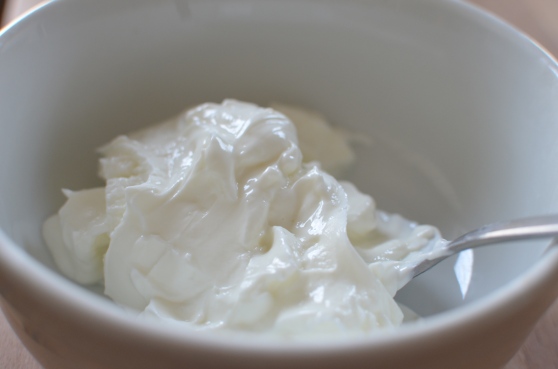 Even though I am, sadly, growing more lactose intolerant by the day, I love dairy products dearly — perhaps more than ever. Luckily, there are some that I can still consume without too much unpleasant consequence (including kefir, certain aged cheeses, butter, and some yogurts) and I am deeply thankful that one of my most beloved of all — a glorious Nordic product with a nutritional profile that sounds like the stuff of myth — is still within my safe zone. [Cultured dairy products in general are easier for the lactose intolerant to stomach, because the bacteria digest some of the milk sugars for you. And strained cultured dairy products are even easier still, since much of the remaining sugars are strained away along with the watery whey.]
Even though I am, sadly, growing more lactose intolerant by the day, I love dairy products dearly — perhaps more than ever. Luckily, there are some that I can still consume without too much unpleasant consequence (including kefir, certain aged cheeses, butter, and some yogurts) and I am deeply thankful that one of my most beloved of all — a glorious Nordic product with a nutritional profile that sounds like the stuff of myth — is still within my safe zone. [Cultured dairy products in general are easier for the lactose intolerant to stomach, because the bacteria digest some of the milk sugars for you. And strained cultured dairy products are even easier still, since much of the remaining sugars are strained away along with the watery whey.]
I first discovered skyr ten years ago, on a summer trip to Iceland to visit some friends. When my friend Eyjolfur brought me to a local Krónan supermarket, I was as thrilled as I always am on a first visit to a supermarket in a new country. (Hint: pretty darn thrilled.) Salty black licorice coated in chocolate: wild! Jugs of whey: Who knew you could buy that? But what really caught my eye was an entire refrigerated wall full of colorful tubs of endless flavors of what appeared to be yogurt. “Not yogurt,” said Eyjo. “Better than yogurt.”
Better than yogurt?! This, I had to try. I’d actually never been the hugest yogurt fan until I’d moved to Italy the year before, but discovering that yogurt was not necessarily a watery, gelatinous, preservative-filled substance tasting of chemicals and sugar was quite a revelation. Italian brands such as Mukki and Parmalat already knocked any U.S. brand on its ass, but I fell quickly and deeply in love with Müller, an incredibly rich, creamy German brand with flavors that sounded (and tasted) like a dessert list: coconut, banana, pineapple, lemon, coffee, walnut, hazelnut, chocolate chip, and my favorite, “crema Chantilly” (whipped-cream flavor!). And all with very short and easily comprehensible ingredient lists. No gelatin or other weird fillers. No artificial colors, flavors, or preservatives. And so my obsession with European yogurt began. It was also in Italy that I first tasted mind-bogglingly thick, smooth Greek yogurt (and on a trip to Greece I was fortunate enough to try the real deal).
When Eyjo and I got back to his place and set up our Icelandic breakfast, I sampled the blueberry-strawberry skyr that we’d bought and found that he was right: This stuff relegated all those others (wonderful though they are and remain) to the second tier of fermented dairyland. Skyr was even thicker, creamier, richer, and more velvety than full-fat Greek yogurt, and without yogurt’s characteristic strong sour tang. Plus it had more protein than even a strained yogurt like Greek yogurt. And yet — via some sort of Viking black magic — it was entirely fat free. How was this possible??
As Eyjo informed me, skyr is not really a yogurt at all, though it has been marketed as one since it was introduced to the UK and the US. Yogurt is made by fermenting whole, low-fat, or skim milk with bacterial cultures. Greek yogurt is made by then straining the liquid whey and concentrating the milk solids, resulting in a thicker texture, less sugar, and more protein. While many yogurts are generally well-tolerated by those cursed with lactose intolerance since the bacteria digest most of the lactose (milk sugar) as part of the natural fermentation process, any strained yogurt is even easier to digest since much of the remaining lactose gets strained away as well.
Skyr, meanwhile, also starts with milk fermented by bacterial cultures (different cultures than those used to make yogurt, however), but it is made from skim milk that has already had the cream separated out (to make butter). Rennet is also added to this fermented milk so that it coagulates, and the liquid whey is then strained away, leaving only the milk solids. This makes skyr, technically, a fermented soft cheese.
First available here in 2005, skyr is still slowly making its debut in the U.S. My favorite brand, Skyr.is, is the only one currently sold in this country that’s actually made in Iceland. Though only available in four flavors here (plain, vanilla, blueberry, and strawberry) and only in Whole Foods markets in select regions, it is authentic, made with milk from grass-fed Icelandic cows.
There are a couple of American-made, skyr-inspired products on the market as well, which are more widely available: Siggi’s (made in New York by an Icelandic immigrant named Siggi) and a newcomer called Smári (made in California by an Icelandic immigrant named…you guessed it…Smári). I’ve tried both, and while I think Siggi’s tastes like a very good strained yogurt, to me it’s not quite the same as either the skyr that I tried in Iceland or the imported skyr. It has a thinner consistency, slightly lower protein content, and a more sour taste — closer to Greek yogurt.
I found Smári to be much closer to Icelandic skyr in terms of texture and nutritional profile, though it’s still tarter — and more yogurt-like overall — in terms of both taste and texture. It does offer the additional benefits of being organic, however, and made with milk from grass-fed cows. I’m not sure that the U.S.-based skyr makers use rennet as there’s no mention of it on their websites — I wonder if perhaps that’s why they don’t resemble the Icelandic skyr as much as you’d expect? Or it could be due to different bacterial cultures.
All this is not to say that I no longer love Greek yogurt (Fage is my favorite brand) or regular yogurt. I still have love for them all, and sometimes prefer them. But skyr is still not as well known in this country as it should be, especially for those looking for the most protein bang for their caloric buck. And in a super thick and creamy texture, to boot. Skyr is so thick and creamy, in fact, that sometimes it’s a bit hard to eat an entire 6-ounce container of it. (But I have a fantastic solution for that, which I shall reveal soon in an upcoming post! Stay tuned.)
For the purposes of this comparison chart, I’m only comparing plain skyr and yogurts with nothing added, because that’s how I prefer to buy them, and add my own fruit or other flavorings. Skyr.is is, sadly, only available in plain, vanilla, strawberry, and blueberry in the U.S. (in Iceland the flavor varieties are breathtaking and seemingly endless), Smári offers the same flavor options, and Siggi’s is available in many unusual flavors, including: grapefruit, orange & ginger, pineapple, and peach.
|
NUTRITION STATS COMPARISON (per 6 oz/170 g) |
|||||||
|
Calories |
Fat |
Protein |
Sugars |
Calcium |
Organic |
Grass-Fed |
|
| Skyr.is Plain | 110 | 0 g | 22 g | 6 g | 20% |
Y |
|
| Smári Pure | 100 | 0 g | 20 g | 6 g | 20% |
Y |
Y |
| Siggi’s Plain* | 90 | 0 g | 17 g | 4.5 g | 23% |
Y |
|
| Fage 0% Greek Yogurt – Plain | 100 | 0 g | 18 g | 7 g | 20% | ||
| Stonyfield Organic Plain Nonfat Yogurt | 80 | 0 g | 8 g | 12 g | 25% |
Y |
Y |
| Dannon All-Natural Plain Nonfat Yogurt | 80 | 0 g | 9 g | 12 g | 30% | ||
| *NOTE: Siggi’s is sold in 150-g (5.3-oz) containers, at 80 calories for plain; I scaled Siggi’s data up for comparison purposes, as all the other brands are sold in 170-g (6-oz) portions. | |||||||
Some of my favorite ways to enjoy either skyr are:
- with a handful of fresh blueberries and a dollop of lemon curd
- topped with fresh raspberries, blackberries, or sliced strawberries
- with a generous spoonful of blueberry-vanilla-chia jam (recipe coming soon!) and sprinkled with Ezekiel 4:9 cereal (which closely resembles Grape Nuts in appearance and flavor, though it’s more nutritious)
- in place of sour cream or yogurt in toppings and recipes (it’s particularly wonderful in baked goods, keeping them rich and moist without adding any fat)
- in a smoothie (e.g., with kefir, bananas, and cocoa powder)
- drizzled with olive oil and za’atar and eaten with pita bread and some of my homemade kibbeh
- mixed with chopped mint leaves, Persian cucumbers, and a little salt
- stirred together with a dollop of spicy Indian mixed pickle
Have you tried skyr yet? How do you like to eat it?
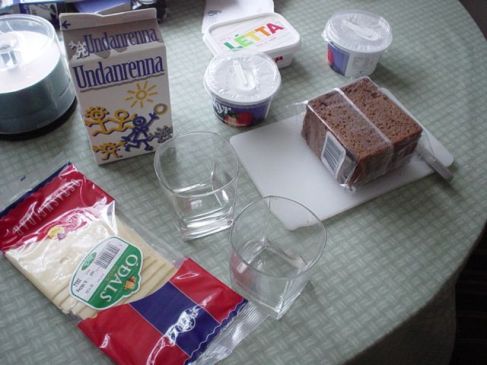
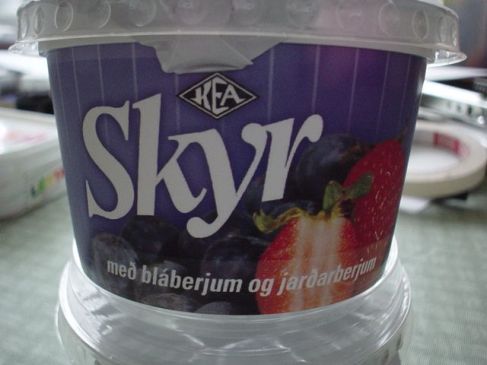
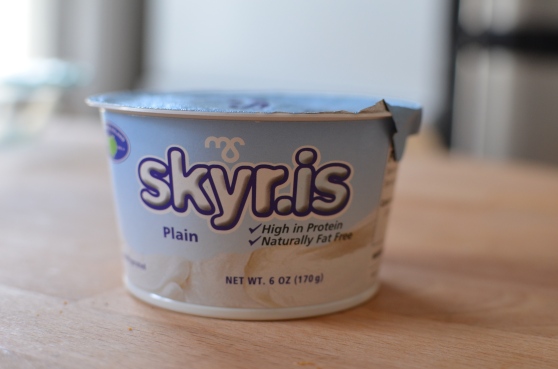
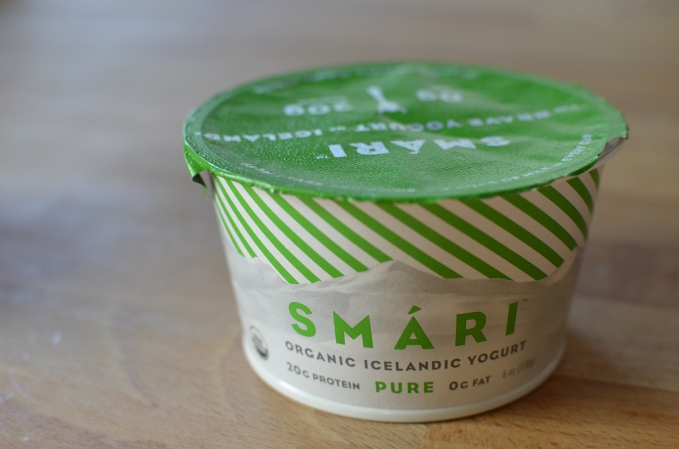
I know it’s 3 years later, but I just noticed your blog and this blog entry. I’m from the U.S. but am currently living in Denmark and Skyr is very common in the food stores so I’ve been eating it from time to time. I can’t eat dairy and write about it in my blog called http://www.sultenskat.com. However, I seem to be able to eat Skyr without much of a problem. I’m not sure exactly why that is, but your blog post might explain part of the reason I can tolerate Skyr. Interesting post you have here! Thank you!